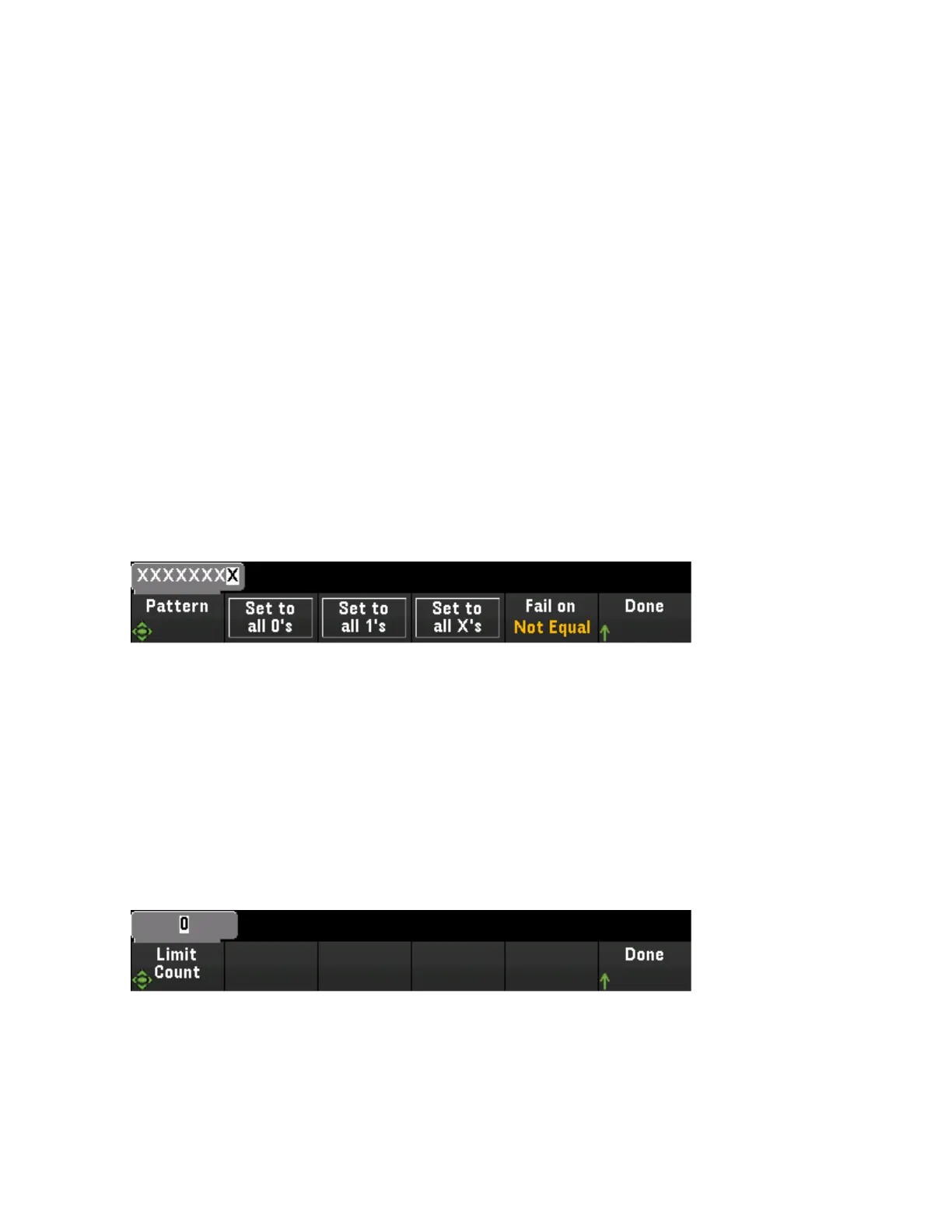4. Press [Scan] to initiate the scan and save the readings in reading memory. If an alarm occurs on a chan-
nel as it is being scanned, then that channel's alarm status is saved in reading memory as the readings
are taken. Each time you start a new scan, the instrument clears all readings (including alarm data)
stored in reading memory from the previous scan.
5.
As alarms are generated, they are also logged in an alarm queue, which is separated from reading
memory. Press [View] > Alarms to display the alarm queue.
Configuring Alarm Limits with the Multifunction Module
You can configure the DAQM907A multifunction module to generate an alarm when a specific bit pattern
or bit pattern change is detected on a digital I/O channels (channel 01 and 02) or when a specific count is
reached on a totalizer channel (channel 03).
To configure an alarm on a digital I/O channel
1.
On a multifunction module slot, press [Alarm] and select the digital I/O channel.
2. Press Set Pattern > Pattern, and use the knob or the front panel arrow keys to set the digital mask
data for 8-bit digital pattern comparison.
3. Sets each bit to "0", "1", or "X" by pressing the Set to all 0's, Set to all 1's, or Set to all X's softkeys.
Bits set to "X" are excluded from the digital pattern comparison.
4. Press Fail On to configure the selected channel to generate an alarm when a specific 8-bit pattern read
is equal or not equal to the digital data read.
To configure an alarm on a totalizer channel
1.
On a multifunction module slot, press [Alarm] and select the totalizer channel.
2. Press Set Limits > Limit Count to specify the limit count. An alarm will be generated when a specific
count is reached during scanning.
Keysight DAQ970A User's Guide 145
[Channel] Menu Overview

